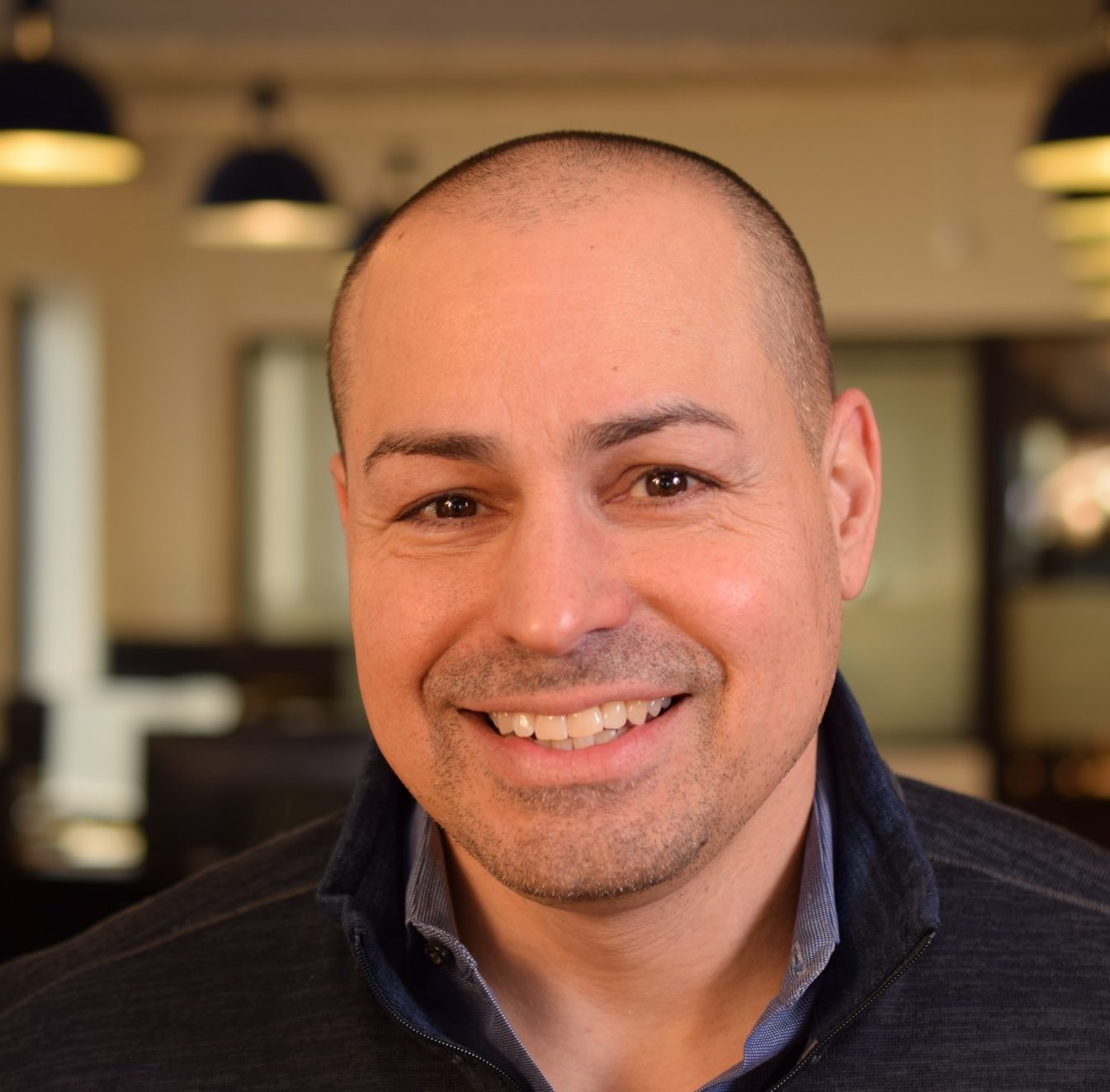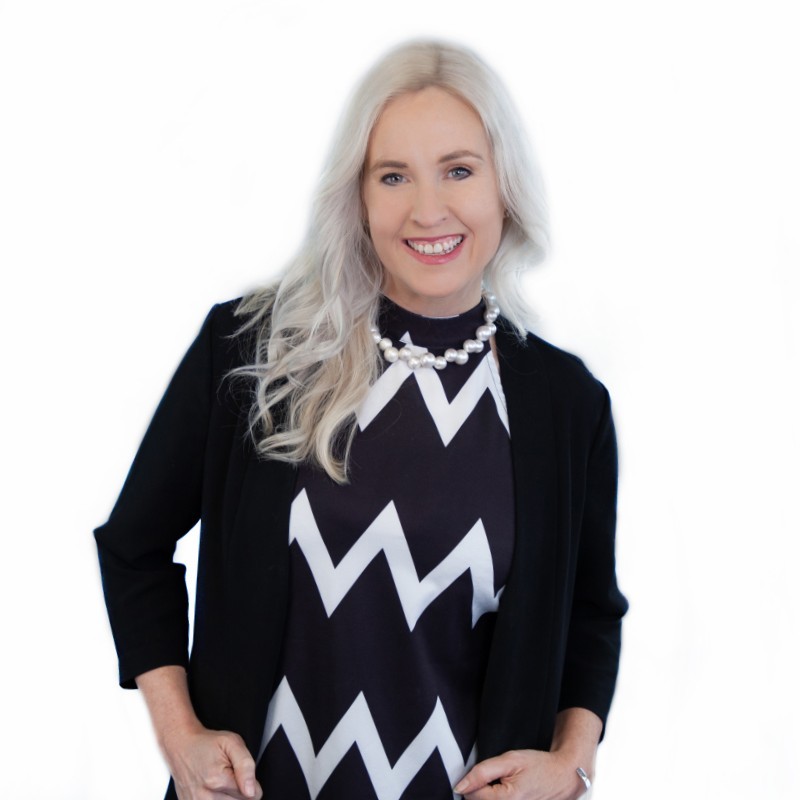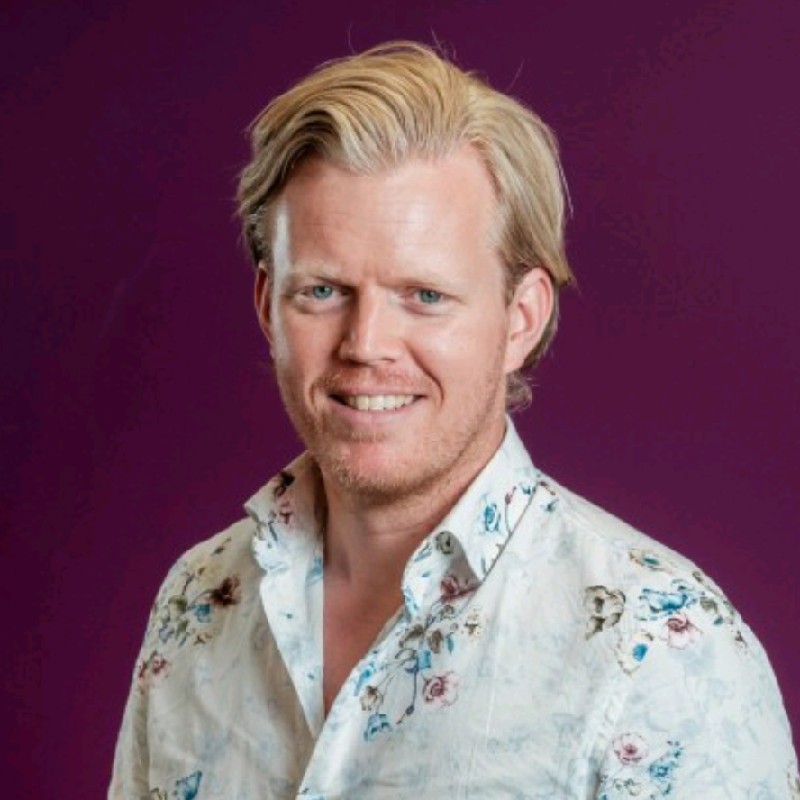Like many CEOs of growing companies, AJ Loiacono is on a mission. He’s trying to change the way that pharmacy benefits managers work so that there’s more efficiency and transparency.
But like other purpose-driven companies, there are a lot of headwinds in the way. Dealing with the status quo of the industry as well as the typical approach to work make it challenging to lead a company.
AJ says, “You don’t have the luxury of saying, well, let’s wait and see. Let’s ride this out. You have to make very crisp, clean decisions in real time. Time is our most valuable asset.”
A new approach to productivity
AJ has reformed his opinion on what it takes to do a good job in the digital workplace. He says it must all first start with trust. If you don’t trust people to make good decisions, you haven’t given them the right perspective. “No one can break the company,” AJ said. We need to be willing to let people make decisions we wouldn’t make.
Learning by osmosis
AJ said that the most important learning years of his life happened when he parked his desk next to someone senior to him who knew the industry extremely well. We would listen into her calls and ask her about things as soon as she was done.
It’s hard to replicate these experiences in the digital world, but we can certainly do a lot more than we are doing now. How can we invite people to be a part of important calls, even if they are just observing.
Similarly, AJ says that leaders of organizations need to put themselves in close proximity to every part of the organization. At Capital Rx, senior leaders have to take a round of customer support calls, which helps them know what customers are dealing with first hand.
Links
Welcome back to The Digital Workplace podcast. Today our guest is AJ Loiacono. He is the CEO of Capital Rx. Hey, AJ. How’s it going?
Good, Neil. How are you doing?
I’m doing quite well, excited to talk to you on this Monday morning, getting our week started right. Let’s start off, though, making sure that you are a real live human. Your CAPTCHA question to prove your humanity, AJ, if you are going to be introduced, what is your intro music, like at a conference or something like that?
Geez, not necessarily high energy, but I’m going to go with some classic rock, I’m going to go “More Than a Feeling” by Boston.
That’s great. That’s a great choice. I feel like you can’t go wrong with that. Feeling that as it comes through.
Yeah, it’s just a really cool track. And I love the story behind that company where you had someone who was an MIT graduate who was working at Polaroid, and it was his last chance to make it into the music business, put together a track with some borrowed musicians that would later become his bandmates, and went on to produce one of the most successful albums of all time, period. Just amazing story.
Yeah, that’s a great reminder, too. I didn’t know all that of how you don’t have to follow everyone else’s path for it. And you’re never too old to take that chance to follow that dream.
Just taking that first risky step.
Yeah. Well, that proves you’re human. Anyone who likes Boston is a real human, I think, although maybe one day machines will catch on. But for now, that still works. So let’s jump into your company. Tell us a little bit about Capital Rx. How did you get started? What’s your mission in what you’re doing?
Yeah, sure. Capital Rx is a PBM, hitting you with an acronym early, Pharmacy Benefit Manager. A lot of people don’t know what a PBM is. But what are PBMs? They manage benefit programs for payers. So these can be employer groups of any size. These could be government entities, municipalities, anywhere there’s a prescription benefit. People may relate to existing PBM, such as CVS or Optum United, Cigna, Express Scripts, massive multibillion dollar healthcare companies that really control about 80% of the marketplace. So Capital Rx, we’ve went through and redesigned the pharmacy benefit program. And really at the core of it are two parts. One is a fair pricing model, which we could talk more about, and two, heavily using technology to create process automation and workflow automation to create the efficiency to operate, not just a better model with a better service requirement, but also lower costs.
Yeah, so this is one of those classic ideas where it’s a great idea. Everyone’s going to agree, yes, we should have better management. We should have better workflow. We should have better pharmacy access for people. It should be cheaper, all sorts of things. But I’m assuming your story is not just been like, oh, yeah, everyone got on board right away and instant success. There’s significant roadblocks in your way. Can you tell us a little bit of what you learned there?
Sure. I mean, people often ask me, so we’ve been doing this for three and a half years. People would say, “Would you ever go back and change anything?” And the immediate answer is never. I would never want to go back. It’s probably some of the toughest times for any organization. But in our business, it’s really difficult because our average client size is about 7,000 lives. So these are big employer groups. So when you’re gaining the trust of a big employer group, what are some of the typical questions are going to be thrown out? Who are some other people that you do this with? And you would be like, “Other customers?” And back in the day, when you’re starting out, I’d be like, “Including you?” They’d be like, “No customers?” And I’d be like, “No.” They’d be like, “Well, how long have you been doing this for?” I’m like, “Including this week?” And they’re like, “Wait a second. You haven’t done this more than a month or two?” And I’d be like, “Nope, just started fresh.”
And so those are really difficult sales. And I am extraordinarily appreciative of the customers that had faith in the model, and in us as an organization to execute on that promise. And I like to point out, we’ve never lost a customer. So we did execute on those statements, those guarantees, that delivery model and it’s only improved. I think the other thing that was another headwind there besides you’re new is, you have to invest an enormous amount of time, effort, resource, and technology. I mean, this entire industry scaled through people, and you can’t follow that same recipe. You can’t be like, okay, for every 10,000 clients, we need X number of operations people and underwriting people and pharmacists and clinical account managers and analysts and billing and finance. That will never work. Because you’re never going to make up the ground you need to beat your opponents.
And so the next thing, there is the technology investment, you can’t have everything tomorrow. So you start the PBM industry, if you’re with me three years ago, do we have the systems we have today? Absolutely not. So you’re going to compromise. You’re going to be like, okay, what’s the triage? What do we need to do first? And the last headwind, I think is just the status quo of the industry. A lot of people make a lot of money keeping things the way they are. And oftentimes, these people may be advisors to employer groups, but people don’t understand the inherent conflict of interest for a lot of these broker consultant relationships in healthcare where they’re getting paid by the largest PBMs and carriers out there. And they’re being entrusted with being an unbiased consultant. Let me pick the best option for you. But lo and behold, I always pick the option that pays me the most money.
And I think this is part of the problem with healthcare, but we’re seeing these walls being ripped apart, where people are starting to get on board and saying, “Wait a second. Are you a marketing manager?” Which is cool, if you want to represent a carrier PBM and say, you’ve got a deal, and you get paid on that deal, that’s great. But you can’t be the unbiased, administrator or consultant that helps the employer choose what is the best option. And this is what we’re seeing more and more is that people are starting to question the old way of doing business, which obviously benefits us.
Yeah. So what kind of advice would you give to somebody, or yourself three years ago, to somebody who’s going up against, they’re trying to be disruptive, they’re trying to change things for the better? What kind of stomach do you need to have? I mean, there’s all the challenges of just starting any kind of business, which like you said, you got to get that technology, you need the people that you have the first customers, but then when you also have this whole status quo industry that’s facing you, that’s saying, we don’t want to change, we have all the reasons in the world to not, what kind of mental game do you have to play to get into that?
Yeah, I think the mental game, first and foremost, is you’re going to understand that this is a fight. You’re going to understand that you’re not going to win every battle. So you have to be prepared for a lot of no’s. And I think some people very often feel that pressure and give up. And so, yes, it’s the classic, you need to be persistent and persevere. But you have to be fair with your expectations. You’re a disruptive company. Will you disrupt the industry in year one? No, will you do it in year two? Probably not, for most businesses. Year three, possibly. Year four. And so depending upon your business model, you have to think about that perseverance relative not just to your own ability to deal with stress and to fight through things, but what’s your budget that you’re laying out for this? What are your milestones of accomplishment that you’re trying to achieve to show progress? If you’re bootstrapping, how do you survive on the budget you’ve developed? If you’re taking investment dollars, how do you demonstrate value back to those investors that have entrusted you with that capital?
And so I think my point is always, yes, it’s going to be a grind. I think most entrepreneurs understand that. I think where people sometimes lose sight of things, which is, how long will it take? Will it immediately be the classic tipping point success story in year one? It’s never been that way for me. I always say I’ve never had an easy road. There’s been no short cut for me. It’s always been the multi-year grind, make incremental gain, and then, develop a brand that’s trusted and continue to move forward with that model. So I think it’s just a combination of patience, but be realistic with your budget and what those milestones are, because you’re either going to require additional capital, or you’re going to have to survive on the budget that you’ve developed for yourself. And I’ve done everything at this point. I have bootstrapped my first business, never taken an investment dollar. I’ve done VC funding at this point. I’ve done high growth equity investing at this point. So I think everything comes with pluses and minuses, but you just have to make sure it matches to your goal.
Yeah. Well, AJ, let’s shift a little bit and talk about the product of the company that you have. Tell us about your team. How big is it? What are the things that you’ve done intentionally? This is not your first company. So what are the ways that you tried to set up the infrastructure as a team group?
Yeah, it’s funny, we’ve gone through explosive growth in the company. And I think, again, we’re being rewarded for having a successful business model and the technology to support it. So I just had a board meeting recently, and this time last year, we had 129 employees, we’re pushing over 300 this time this year. And so a lot of growth, especially in a pandemic, where normally, we would have a much more centralized footprint. So this is an interesting statistic when you talk about building teams. But before the pandemic, we were about 85% of our workforce was New York City, it’s our headquarters. And then if we look, during the pandemic, we started to shift, 60% was New York, 50% is New York. And I think right now we sit just slightly under 50% of our workforce is New York based. And the rest is we’re now located in 21 states across the country.
And so one of the things that the pandemic taught us is, we used to be so focused on the collaborative framework of everyone in an office and being able to know everyone and talk to everyone, which I still think is helpful. But the other thing the pandemic taught us, which was, you can have a distributed workforce across multiple states and multiple time zones. You can have a productive workforce where managers are not working directly with people indirectly. And I think it also made us recognize that even going back to work, we’re never going to go back to five days a week. And so I think when we looked at building our organization, we started with a very different blueprint. And I think this happens quite a bit in any small business is you have to adapt and overcome with what’s being thrown at you. And so you don’t have the luxury of saying, well, let’s wait and see. Let’s ride this out. You have to make very crisp, clean decisions in real time. Time is our most valuable asset. I say that all the time to everyone in our organization.
So we had to make a decision. I said, we’re going to go where the talent leads us. We’re not going to force people to New York. If people are in New York, it’s great. It’s a wonderful city, love the community, diversity, the groups that we attract in here. It’s a great place for any employer group. However, there are talented people in our industry in every state. Let’s find them. And so I think it was a real benefit. And I think one of the things that we had to adjust is, how do you manage remote workforces, including our call center moved entirely virtual, which is something that you don’t normally see in this industry in healthcare. So a lot of changes that we had to make, but I think they were the right decisions.
So you mentioned productivity. I want to come back to that specifically. I think that’s something that’s probably pre-pandemic. A lot of people were maybe nervous about, like, okay, how do I measure productivity and make sure that people are doing a good job and doing that work? And now 18 months later, we’re all rethinking the whole concept of productivity and what does it mean. So where have you landed on that? Where are you at today as opposed to where you were before?
So at the core of everything we do, I believe, trust is critical to any highly productive workforce. And I think trust is at the core of everything we do. And what I mean by that is you have to trust everybody down to the associate level. You have to empower people to make decisions. Because if you have to have the meeting about the meeting, and review every decision on your team, you’re never going to be able to sprint, you might even never be able to mildly jog and make progress. So in order to continue to sprint, and look, you’re going to break things, but I always point this out, no one can break the company, short of doing something you shouldn’t. And our point is, okay, we’re never going to know the outcome. I definitely believe there are infinite outcomes to any decision. And just because you do the opposite doesn’t mean it’s going to be a better outcome. So as long as you put some level of thought and heart into your decision, I think it’ll be fine. But as long as it doesn’t take too long, so I’d rather us continue to make progress.
I think the other thing that you have to look about with productivity is how do you measure it remotely? Do you get a sense of how productive your workforce is? So things like on the developer side, there are metrics that tell a pretty detailed story. What was your sprint look like? Did you achieve your milestones in this current release? How much code was written? You can measure that. I think on the sales side with salespeople. How productive was this person? When they had a quota, did they hit it? Those are metrics that are pretty easy to understand, not all the story of productivity, but a good portion of it. But then there are people like, I’m in legal, I’m in the accounting and finance department, I’m in underwriting. How do you measure productivity? Do you start to look at ratios of core deliverables and work output per person? Yes, you can. And I think that’s one way you begin to look at it. You have the subset of KPIs and you have a headcount, or at least we look at a cost or a unit economic on major functions that we do within the company. And I think that’s helpful.
But I think there’s another area that’s recently emerged in a conversation, and it’s around, how do you know someone is doing the best job they can. And that’s a tough thing to determine, especially when you’re growing rapidly. You have so many new people, and you’re hiring so many people on top of people rapidly. Was that first cohort good? Were they great? How are they producing as we stack another cohort on top of them? So I think this is where, I won’t say we’ve struggled, but we’ve had to challenge our own thoughts. I feel like, there’s an Orwellian approach, which is, I’m going to monitor every click and everything you do on that company owned laptop. I personally do not want to go there. I do not. Like back to the trust. If I trust people, I don’t really care if someone has in their shopping cart a pair of shoes while they’re taking a call. If they’re people that I trust, and they’re doing a great job, who cares? You know what I mean? You’re making dinner in the background for your kids or whatever, I could care less. You know what I mean? I think that’s an important part of the trust component with an organization.
But I do believe where we’ve had to have some measure of what I would say value of an employee and their progress and development is I do ask every manager to rank their people. And someone will be like, “Well, what do you mean?” I don’t care if it’s a fantasy football league, or entrance to the Nobel Prize, there is a ranking system. To do anything, who’s your best? And this is what is the key because people will say like, “Oh, my God, you’re doing a forced ranking to fire people.” No, I want to do a forced ranking to identify the people that need the most help. How do we support them? Because to be fair, 9 times out of 10, your best people have been here the longest, they understand how we operate, they understand the workflow, they’ve gathered the ideal, and look, sometimes I’m surprised when people say, and I saw this recently in a report where people had been here for a couple months, and they made the top of the list. That’s amazing. What you want to figure out is, why is that person so amazing? For them to make such an impact, they must be doing some incredible things. Are there characteristics we want to replicate?
But for the people that need help, you want to figure out what’s the best support system. Is it pairing them with that overachiever? Like mentor them. I point this out all the time. I was actually just on the phone with a colleague. And when I entered the payer side of the business, I came from pharmaceutical manufacturing. So people say, oh, pharmacy is pharmacists, and I go supply chain consulting, on the pharmaceutical manufacturing side, is a very different world from Pharmacy Benefit Management. And so when I entered the payer side, I had a wonderful mentor. And I literally parked my desk next door at my old company, and I listened to everything she said, how she engaged with people, I listened to her tactics and strategy and how she approached different clients. I learned so much about everything from pricing to contract management. And without her, and shout out Kristen Bagley, thumbs up, you’re an absolute Rockstar, I would not have developed at the same pace. I think if you have a desire to learn, you’re eventually going to get there and you’re a talented person.
But I never would have been able to catch up. It was like having a master class tutor with you every day for two years. We literally shared a small little office. Our desks were next to each other. And it was for my benefit. And she knew that. I need to catch up on what the heck goes on in the payer space. Because to be frank, none of this makes sense. Which actually led us to why we created Capital Rx, because it’s that incongruous nonsense that kept coming up. And I’m like, there must be a better way. Because the supply chain doesn’t behave this way. It goes off the rails when it gets into the hands of the benefit administrators, the PBMs, the benefit managers, and we need to change that.
Let’s play on that a little bit. Because this is one of my favorite topics is, how you learned with Kristen was, we’ll call, an osmosis type thing. You learned because you’re right next to her, you got to overhear conversations, you get to have her on instant access at all sorts of times. How have you found a way to replicate that or to provide a similar benefit within these distributed teams that are pulled apart and people aren’t next to each other all the time? It’s definitely a benefit you want to give to people. But you also want to have that tight relationship that you had? Have you found a way to bridge those connections?
Yeah, I think some of it goes back to identifying the people that need help. So assigning them a mentor, so they can join conversations passively with the person that we’re pairing them with. And then the inverse is true. Can that person listen in, not to admonish or correct someone, but to say, hey, this is the things that you want to look at to do better. And I think that’s the way that we’ve addressed it recently. I won’t say we have an open and shut case study here of success. I think like a lot of people in this reoccurring pandemic world, we’re trying to figure out what that looks like. So we’re trying this. I think it’s helpful. I don’t think you’re ever going to get the consistency of showing up five days a week, with the exception of work travel, to gain that connection and transference of knowledge. But I think you can do it with, again, making the people accessible, making your partners and colleagues accessible to conversations, like, hey, you want to listen to me do a pitch? Great. You want to listen to this person do an implementation kickoff call? Awesome.
And that goes for me as well. I have questions all the time on how things work. Because I always feel, as a senior manager, when you stop taking out the garbage, you stop being an effective manager, not to say things are garbage as workflow processes. But what I mean by this is, you have to know how things function and work. If you don’t, how are you going to understand the decision support and the strategic guidance you’re going to give the organization if you’ve completely lost touch with how things work? And so a great example is myself and my C suite peers, all of us have to do a three-hour shift every quarter in the call center. People will be like, “Why?” And I’d be like, one, you want to hear from your end user, the patient that’s at the pharmacy and saying, how do I access this medication? Or I don’t have a benefit card, how do I order one? Whatever may come up here. And I think this is so important in understanding these workflows. I talk about taking out the garbage, and people will be like, “Well, why would a CEO ever want to listen in on an implementation kickoff call? Why would a CEO ever want to hear a billing and finance discussion?”
Because you need to periodically understand how these things are functioning. Because if you don’t, you’re a stranger in your own company. I often say, if you were to put me on the stage with the CEOs of the three other largest PBMs in the country, the CEOs have no understanding how underwriting works, how billing and reconciliation works. They have no understanding about managing a network and incentives around that. They have no understanding of the cadence of reimbursement workflow, or exchange file formats from accumulator file feeds, to eligibility files, and all the different flavors in which that comes in. They don’t understand these things because they’ve been taught not to care about it. They just care about the earnings report and putting that together and working with the finance team. And they’ve lost complete understanding of what they do. The classic Peter Drucker question, which is what does your company do? If you look at them, their response would be like, we make earnings calls.
I love that concept. But we’ve heard a few other people on the show that talk about the idea of especially interacting with the end user and understanding what it looks like from end to end. And I think that that’s a great thing to do. Especially we talked about the osmosis that it can work both ways. It’s not just people coming up in the company that need to learn and be exposed to other people. But those who are leading also need to be exposed to everything else that’s going on.
I talk about this all the time, which is it’s our Gen two program is everybody has to have their successor. If you can’t name your successor, you’re already failing in our organization. And that could be successors, plural, which is, if anyone unfortunately has to leave, due to personal reasons or they want to chase a dream, I would never stop anyone on that. I wish you the best of luck in that transition. But who replaces you? And so I think this plays an important role in that transference of knowledge is that if you trust someone to be you, you’re already in a much better place, and so is that person, and that person has someone who will be their replacement and their successor, and that just rolls straight down the line. We also look at promotion from within. I talk about this, that if all of these things are coming together, people are moving with you as the organization expands. The person that was a junior front end developer is now a senior front end developer, and that person shows an interest in design and owning our brand, and they want to be our creative director, awesome. Love that story. We want to replicate that from a call center customer support side to finance to underwriting to operations, clinical care management, take your pick. And I think we’ve seen that in our own organization where people are on their second or third promotions as the company has grown. And I think that’s key as well.
Excellent. AJ, as we close this out, what’s the one question you’re still wrestling with that you want to throw out there for other people? As you’re building this digital workplace, rebuilding work for the digital age, what is it that’s still got your mind working?
I think I won’t say what keeps me up at night. But the thing that you’re always challenging yourself with is, what’s your big bet? I talk about this each year, which is, what are you willing to overload and I’ve talked about this concept in the past. So I’m a big video gamer in my free time. And I believe in this concept of the min max I’ve brought up. These are some of the most diabolical, creative people you will ever come across. What’s their skill set? They’re like codebreakers. They have a pattern of information, and they figure out and distill the exact combination things to win. And people be like, “Well, that’s an exploit.” It’s not an exploit. That person has figured out using the ruleset that has been given to them the best outcome with all of the functions in front of them. And so when you look at your big bet, you’re distilling a massive amount of information. And you’re just like, we have a business model, we have obviously expansion markets and things we’re selling into, but that’s not your big bet.
Your big bet is what no one knows you’re thinking. This is what you and maybe one or two people in your organization talk about, which is, what is the big bet? What are you going to overload because you’re seeing something, you think you’re seeing something. I always want to point this out. You believe you’re seeing something in the data. And it’s not so much like a video game I could just play again and be like, well, that build didn’t work. Let me try something else. I genuinely believe this, which is, I see something in the data, but this is you have really one chance. You’re about to overload something. And that’s what I talk about a big bet. It’s not like, we’re going to test 20 different things. I mean, this is the classic difference between my competitors in us. A large healthcare company will do 50 little pilots that will be inconsequential. And basically, they’ll spend money and pat each other on the back and nothing will come from it. We’re going to look at the data and be like, this is really important, and I’m about to push 40% of my budget towards it. That’s a big bet.
So the thing that we struggle with in the digital age, I think is when you look at the digital workplace is you used to be able to collaborate a little bit more that two or three people and focus on these things and the data might have been easier to reach because we’re sharing in that distillation process. So for us, we obviously have our big bets locked and loaded for this year. We’re going to see what that turns into. And we’re going to decide on what our big bets are as we go into 2022 and beyond. And I think this is something that every entrepreneur or employee or manager, this is something they need to be thinking about. What’s your big bet?
Yeah. And like you said, the collaboration element, how much faith do you have in that big bet? Because it’s usually something you’re thinking about all year long. You’re throwing ideas back and forth to each other. Do you still have that space to be collaborative and to think about that? That’s a great point.
Yeah. And so it’s something I think you in the past maybe had more comfort with because you had a chance to spend more time together on that decision. But you still have to make it.
Yeah. AJ, this has been great. I love your perspective, love what you’re doing. All the best to you and your company as you keep moving forward. Where should people go to learn more about what you’re doing and what you’re putting out there?
Yeah, thanks, Neil. You can check us out at cap-rx.com.
Excellent. We look forward to hearing more from you later. I’m anxious to see how you develop and things change and as you grow and learn more things, so we’ll definitely be checking in with you again soon.
Thanks so much, Neil. Have a great afternoon.
Healthcare executive on a mission to change the way prescriptions are priced and patients are serviced to create enduring social change.












